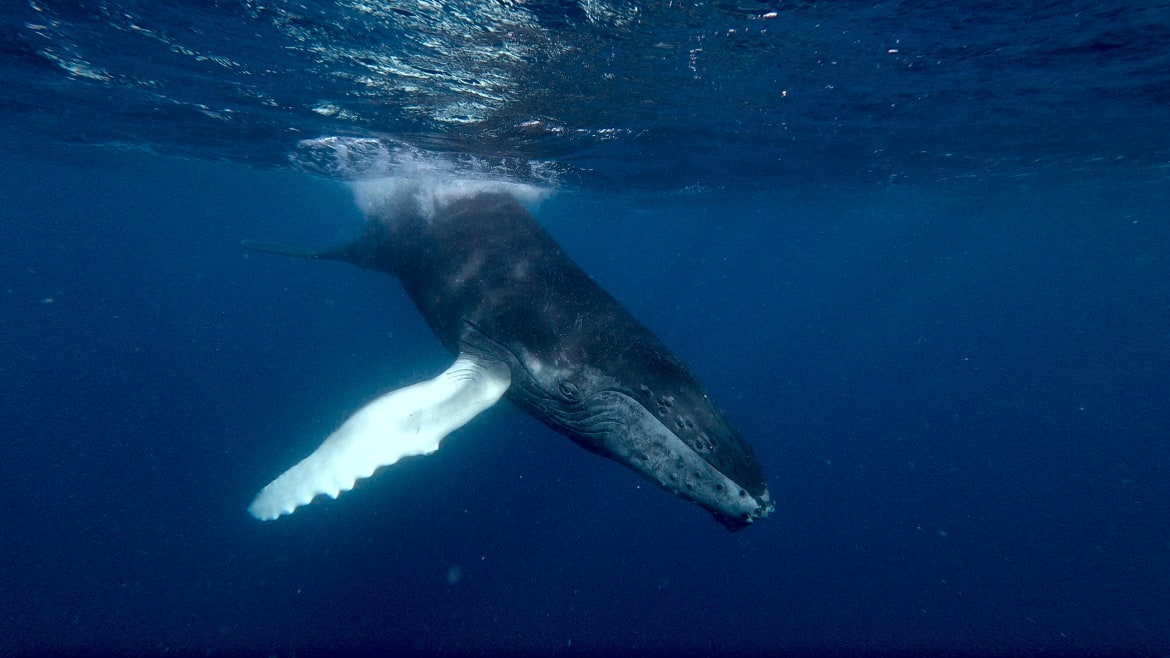Tom Mustill
The global mecca for whale-watching, Monterey Bay, is a short drive from the epicenter of the Information Age, San Francisco and Silicon Valley. In the summer of 2018, three years after my first fateful trip there, I was working just down the road from Britt [Selvitelle] and Aza [Raskin]. They drove down to our house, where my crew and I were staying during a film shoot. I had also invited Dr. John Ryan, a soft-spoken scientist in his fifties from the Monterey Bay Aquarium Research Institute with a penchant for skateboard- ing and roller coasters. John was already a believer in the power of AI to help explore whale sounds. Monterey Bay is cold; a feeding ground. It was thought that most humpback song happened far away, in their tropical breeding grounds. But John had a deep-sea listening station hooked up to his office, and he decided to trawl the recordings. It took hundreds of hours. To his astonishment he discovered the songs of hundreds of animals. John and his colleagues had then trained AIs, which made short work of six years of recordings, adding Blue and Fin whales to their listening skillset. They uncovered humpbacks singing in Monterey across nine months of the year. They learned the cold waters sometimes rang with whalesong for over twenty hours a day. John’s recordings covered the time Prime Suspect had been in Monterey. He told me that he bet our whale’s voice had been captured somewhere on his tapes. Sitting amid our stacked life vests, camera gyroscopes, charging batteries, and whirring hard drives, we ate fajitas and listened intently as Aza and Britt explained the plan they’d hatched. They were going to take the incredible computational power of the tech behind Google Translate and apply it to decoding animal communications.
To understand what the hell this meant, Britt and Aza had to give John and me a lesson in how AI had revolutionized translation. People had been using computers to translate and analyze language for decades; the field is known as natural language processing. Until recently, however, you had to laboriously teach the machine how to turn one human language into another. Computer programs were given decision trees to work through when faced with text in one language, and had to be instructed on what to do in every situation; they needed bilingual dictionaries and to be told the rules of grammar and so on. Writing these programs was time-consuming, and the results were rigid. Situations the programmers hadn’t anticipated would arise and crash the program, such as the computers’ inability to overcome misspellings.
But then came two developments: The first was the blossoming of new AI tools, like artificial neural networks—the same computer programs based on structures in the human brain that Julie used to discover unique dolphin whistles. Especially powerful in this regard were neural networks arranged in multiple layers called deep neural networks (DNNs). The second development was that the internet had made enormous volumes of translated text data freely available—Wikipedia, film subtitles, the minutes of meetings of the EU and the UN, millions of documents carefully translated into many languages.

